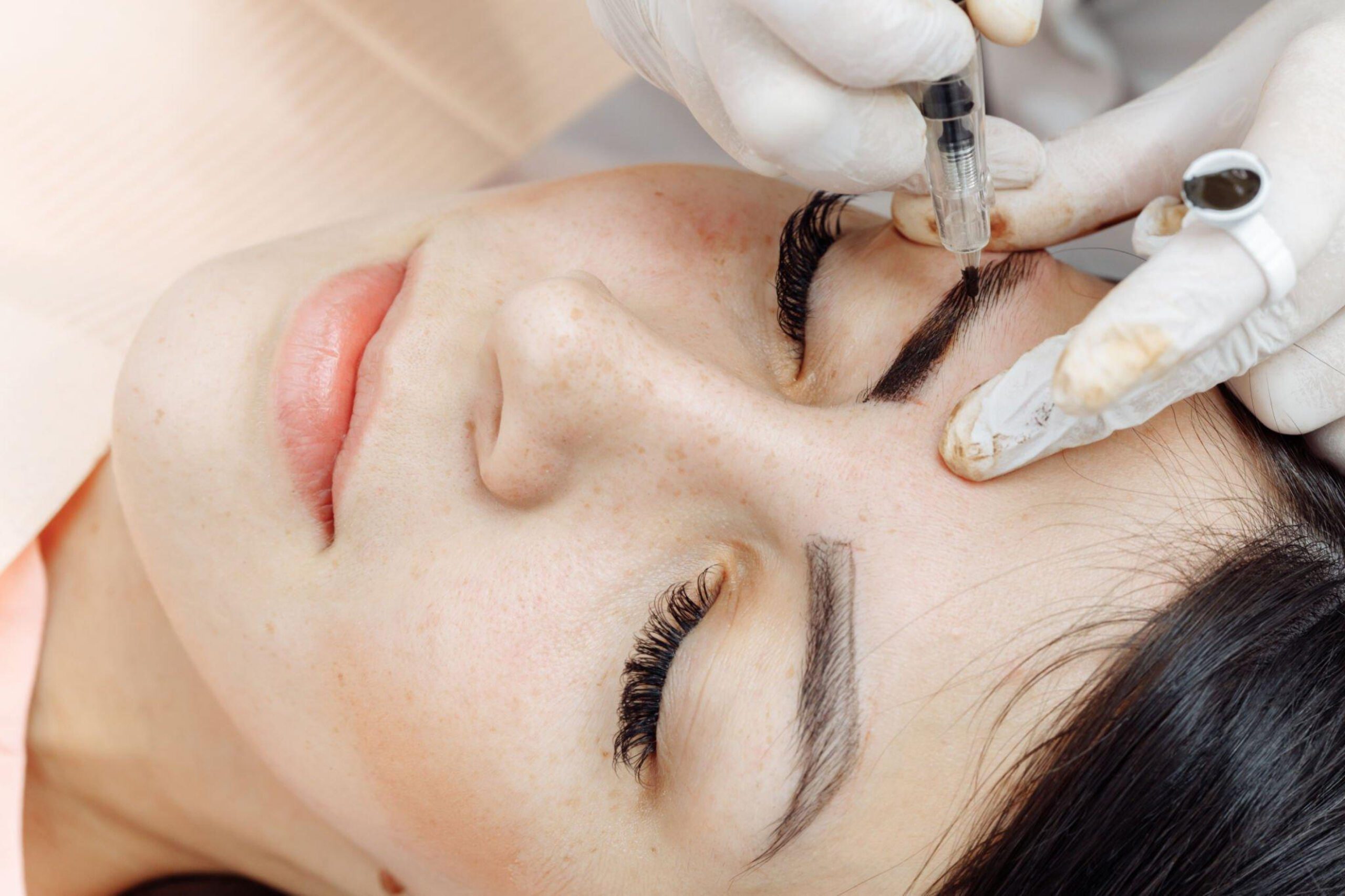Elevate Your Beauty with Semi-Permanent Nanoblading
Are you ready to redefine your lips and eyebrows, enhancing their shape and fullness with a semi-permanent cosmetic solution? Look no further than nanoblading at Sarayu Clinics. Our dedicated team of professionals is committed to delivering exquisite results, ensuring you leave our clinic with the stunning, natural-looking features you desire.
What is Nanoblading?
Nanoblading, also known as microblading, is an intricate and semi-permanent cosmetic tattoo technique that utilizes an ultra-fine nano needle. This versatile procedure is designed to enhance the beauty of your eyebrows or lips, making daily upkeep a thing of the past.
Nanoblading for Eyebrows
If you’ve been struggling with sparse or thin eyebrows, Nanoblading is the answer. This procedure involves the skillful application of pigmented ink using a super fine needle, creating meticulously designed hair-like tattoo strokes. Not only does Nanoblading add volume to your eyebrows, but it can also redefine their shape, bringing out their natural beauty.
Nanoblading for Lips
When it comes to Nanoblading for lips, the procedure differs slightly. It’s a semi-permanent tattoo method using ink to apply either lip liner or full lip color. Lip liner is an excellent choice to even out irregular lips and create a fuller appearance. If you opt for full lip color, you can select a shade that complements your natural tones or choose a color that suits your style.
Nanoblading vs. Microblading
Nanoblading and microblading share the same goal of enhancing your features, but they have some differences:
- Precision and Accuracy: Nanoblading employs a smaller needle, resulting in even more precise and natural-looking results. The increased precision ensures that the final look is flawless.
- Comfort: Thanks to the smaller needle used in Nanoblading, the procedure is less painful and entails minimal bleeding.
- Longevity: While microblading typically lasts up to 12 months, the results of Nanoblading can endure for up to 3 years, providing a longer-lasting solution.
The Nanoblading Procedure
Nanoblading involves two essential steps: the initial procedure and a follow-up session for perfection. Your journey begins with a consultation to discuss your preferences and expectations.
In preparation for the procedure:
- Avoid waxing or tweezing your eyebrows a week before your Nanoblading session.
- Steer clear of alcohol, caffeine, ibuprofen, aspirin, and fish oil supplements at least 24 hours before your appointment.
- Refrain from receiving a facial treatment at least two weeks before your session.
- On the day of the procedure, avoid sunbathing or tanning.
- For a month prior to the treatment, avoid using retinol or Vitamin A products.
Before your first session, a patch test may be conducted to ensure you’re not allergic to the pigment ink.
Nanoblading for Eyebrows
The procedure for Nanoblading your eyebrows starts with a discussion about your desired shape and color. Your makeup technician will meticulously design the perfect look, making any necessary adjustments for symmetry. Once you’re satisfied with the design, a numbing cream is applied, and the technician proceeds to create precise hair-like strokes with the pigment and a super fine needle. After the initial session, you’ll return for a follow-up session after about 8 weeks for any necessary refinements.
Healing Time for Eyebrow Nanoblading
It typically takes around 4 weeks for your nanobladed eyebrows to heal. Initially, the color may appear darker than expected, and you might experience some swelling, soreness, and redness. Over the next 3 to 4 weeks, your tattooed eyebrows will blend seamlessly with your natural hair.
Post-Procedure Care for Eyebrow Nanoblading
To ensure optimal healing and lasting results, follow these post-procedure tips for eyebrow Nanoblading:
- Keep your eyebrows as dry as possible after the procedure.
- Gently wipe your eyebrows daily with a damp cloth, then apply the provided moisturizing cream.
- Steer clear of sweating, saunas, and hot baths for the first 7 days.
- Avoid wearing makeup around your eyebrows for at least a week.
- Abstain from tanning beds, light therapy, microdermabrasion, and chemical peels for the next 30 days.
Nanoblading for Lips
When you choose Nanoblading for your lips, you’ll collaborate with your technician during the first session to discuss the desired lip shape and color. For lip liner, the technician will draw the desired shape on your lips, and for full lip color, you’ll select the shade that best suits your style. After applying numbing cream to the lip area, the technician uses the nano needle to either define the lip line or add full lip color.
Healing Time for Lip Nanoblading
Following your initial session, you can expect some soreness, redness, and swelling that may last for up to 5 days. Complete healing of your lips typically takes up to 4 weeks. Your makeup technician will schedule a follow-up session about 8 weeks later to perfect the look.
Post-Procedure Care for Lip Nanoblading
To ensure your lip Nanoblading heals beautifully and lasts, here are some post-procedure tips:
- After treatment, avoid spicy, citric, and salty foods to prevent irritation.
- Keep your lips as dry as possible by using a straw for drinking.
- Refrain from touching your lips with your hands to prevent irritation or infection.
How long does Nanoblading last?
Nanoblading results are semi-permanent, with a typical duration of 1 to 3 years. For the best and most enduring results, plan for a touch-up or maintenance treatment after the first year or year and a half.
Does Nanoblading Hurt?
While Nanoblading is a minimally invasive procedure, some discomfort is expected. It’s generally more tolerable than microblading or traditional tattooing but can be slightly more uncomfortable than waxing or tweezing. Your technician will apply numbing cream to minimize discomfort during the procedure, and you can use an over-the-counter anti-inflammatory medication afterward to reduce pain.

